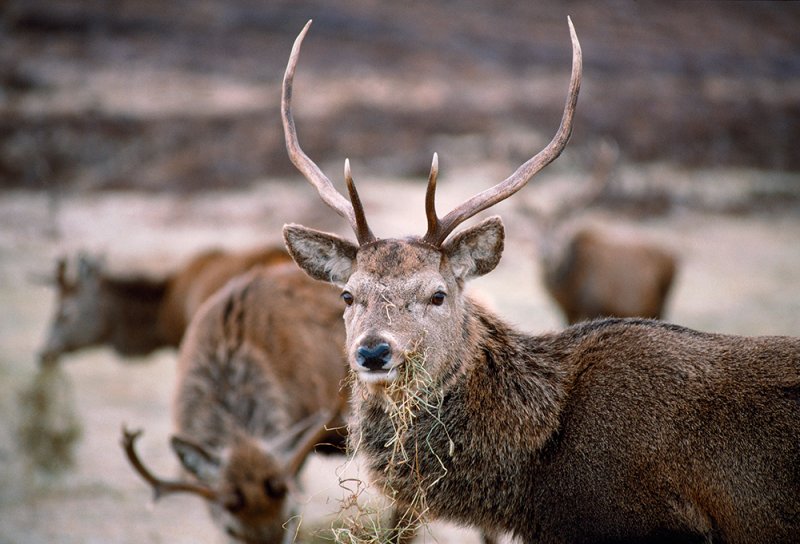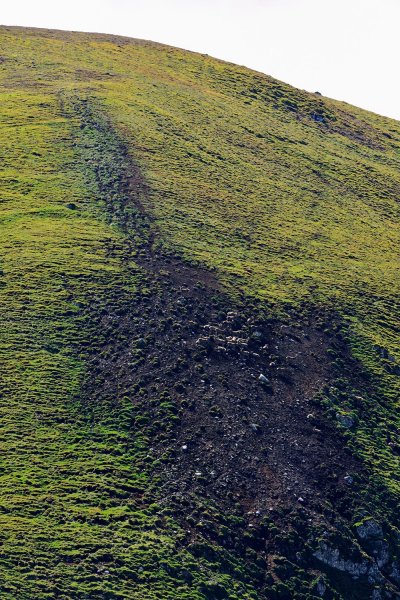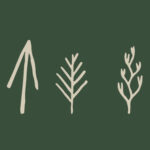Rewilding our red deer
The unnaturally high numbers of red deer found across much of Scotland is one of the major conservation issues faced by those working to restore native woodlands. However, the culling of deer is seen by some as cruel. Here Doug Gilbert, Operations Manager of Dundreggan, our Conservation Estate, explains why lower numbers of deer are better both for our forests and for the deer themselves.
I am writing this after the untimely passing of Dick Balharry, one of Scotland’s most important conservation figures of the last half century. Dick was a passionate advocate for landscape-scale native forest regeneration at a time when few others seemed to recognise the environmental crisis facing Scotland. He recognised that the key to the recovery of the Scottish Highland’s native woodlands was through the management of red deer. By reducing herbivore impacts at Beinn Eighe, where he became Britain’s first National Nature Reserve Warden, in parts of the Cairngorms, and at Creag Meagaidh, Dick instigated some of the earliest conservation restoration projects in Scotland. Pursuing a similar aim at Dundreggan, Trees for Life owe a debt of gratitude to Dick for his visionary work.
"Deer have evolved to browse on tree leaves – that’s why they are desperate to eat virtually every young tree that manages to poke its head above the heather in our treeless landscapes…"
The management of red deer at Dundreggan is crucial to our restoration plans for the forest, but in setting out on this path, we are also beginning the process of rewilding red deer here. In many parts of the Highlands, deer are managed for sport shooting with large numbers maintained to generate a surplus of shootable stags – the trophy animals so sought after by paying guests. The by-product of this system is a habitat so degraded that in many places deer have to be fed artificially on hay and mineral supplements. Because of this, red deer have become a shadow of their former selves in Scotland. Not only have they lost their natural habitats and predators over the last few centuries, but more recently they are losing their very wildness too.

On a cycling expedition this year to a West Highland glen, I came upon a herd of 20 or so stags standing nonchalantly no more than 10 yards from the road verge. I stopped and even dismounted without them paying any attention to me. I had to take a few steps towards them before they reacted by taking a few relaxed steps away from me. A couple of hours later, I watched as a pickup truck drove along the road distributing mineral licks and hay to the waiting animals. These are not the proud Monarchs of the Glen so beloved by Visit Scotland, or advertised in so many sporting brochures (and shortbread tins). Those stags were not “nonchalant” or "relaxed”; they were starving and desperate! What we have created is a breed of stunted, malnourished, semi-tame deer, whose movements and population are highly regulated through human intervention. Can we aspire to something better? What would it take to rewild this iconic Scottish animal?

their native forest habitat. With unsustainable numbers of deer trying to eke out a living here, the habitat soon becomes eroded.
The answer to the first question must be a resounding yes. There is no ecological, social or economic case for the way things are now. By rewilding red deer – giving them back the habitats that they belong in and reducing human interventions in their management – we can improve on all these things. Ecologically, deer are forest animals and by restoring forests to them, we will improve their welfare, increase their average weights and the size of their antlers. Because trees have such extensive and deep root systems, their leaves are rich in minerals not available to a herbivore eating smaller ground-dwelling plants. Deer have evolved to browse on tree leaves – that’s why they are desperate to eat virtually every young tree that manages to poke its head above the heather in our treeless landscapes, and it’s why deer able to browse in woodlands are healthier and bigger than those forced out on the treeless hills and moors.
The second question is also easily answered, though politically it is much more sensitive – to rewild deer we need to reduce their browsing pressure in the uplands to a level that enables spontaneous tree regeneration to take off. The ecological balance needs to swing heavily in favour of trees, for a period of say 30-50 years. Beyond that, it should be possible to gradually let the herbivore pressure increase again as the habitat becomes sufficiently robust to support it.
Rewilding has come to be associated with the re-introduction of beavers, lynx and other species missing from our ecosystems. But with UK Government policy aimed at expanding forest cover across the country, Deer Management Groups coming under increasing pressure to justify management of deer for the wider public good, and land reform continuing to be an important policy area for the Scottish Government, perhaps the time is ripe for the rewilding of one of Scotland’s remaining “charismatic megafauna”- red deer – as a catalyst for landscape-scale forest expansion.

